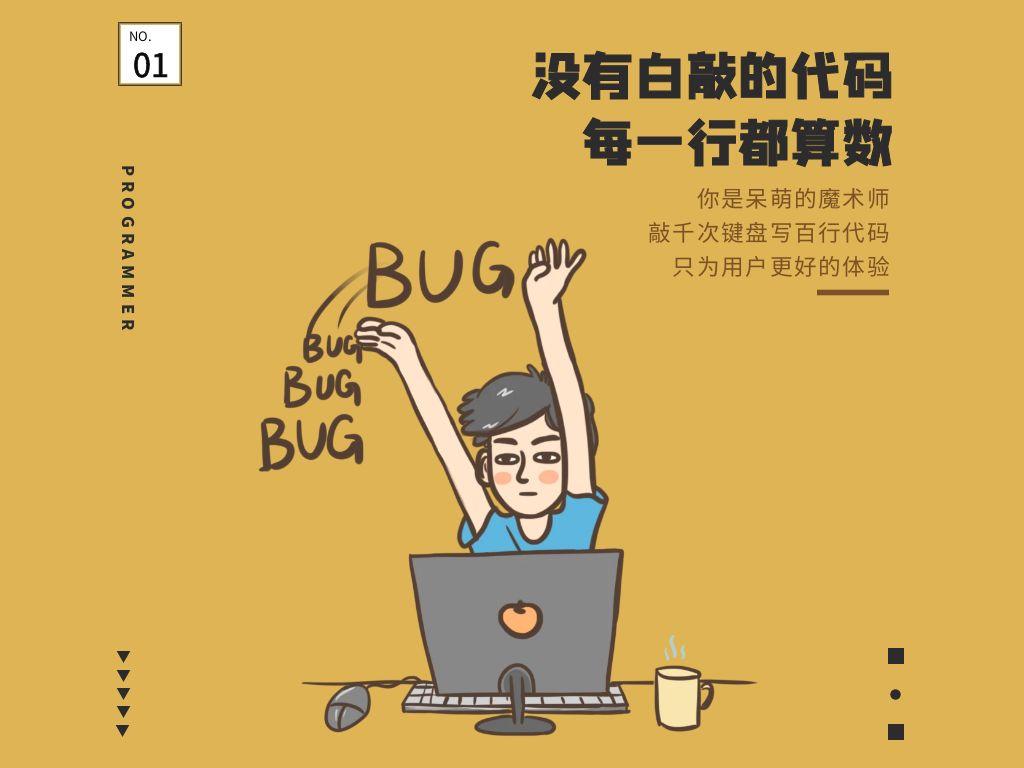本文主要是介绍[deeplearning-014] 深度学习的模型结构历史,希望对大家解决编程问题提供一定的参考价值,需要的开发者们随着小编来一起学习吧!
[0] 参考文献
http://www.cnblogs.com/skyfsm/p/8451834.html
https://www.cnblogs.com/52machinelearning/p/5821591.html
[1]Q:什么是深度学习?
A:隐层数量多的神经网络,隐层从5~1000不等。
[2]Q:深度学习的网络模型有哪些种类?
A:图像处理的卷积神经网络CNN; 自然语言处理的循环神经网络RNN; 深度信念网络DBN。
[3]卷积神经网络的历史
[3.1] LeNet-5,1998,《Gradient-based learning applied to document recognition》
5层网络。卷积层。池化层。
-----
#LeNet的Keras实现
def LeNet():
model = Sequential()
model.add(Conv2D(32,(5,5),strides=(1,1),input_shape=(28,28,1),padding='valid',activation='relu',kernel_initializer='uniform'))
model.add(MaxPooling2D(pool_size=(2,2)))
model.add(Conv2D(64,(5,5),strides=(1,1),padding='valid',activation='relu',kernel_initializer='uniform'))
model.add(MaxPooling2D(pool_size=(2,2)))
model.add(Flatten())
model.add(Dense(100,activation='relu'))
model.add(Dense(10,activation='softmax'))
return model
-----
[3.2] AlexNet,2012,《ImageNet Classification with Deep Convolutional Neural Networks》
数据增强:水平翻转; 随机裁剪; 平移变换;颜色光照变换。
训练策略:Dropout抗 过拟合; ReLU激活函数; LRN局部响应数据归一化; Overlapping Pooling重叠池化; 多GPU并行。
ReLU函数:ReLU本质上是分段线性模型,前向计算非常简单,无需指数之类操作;ReLU的偏导也很简单,反向传播梯度,无需指数或者除法之类操作;
ReLU不容易发生梯度发散问题,Tanh和Logistic激活函数在两端的时候导数容易趋近于零,多级连乘后梯度更加约等于0;ReLU关闭了右边,从而会使得很多的隐层输出为0,即网络变得稀疏,起到了类似L1的正则化作用,可以在一定程度上缓解过拟合。
-----
AlexNet的Keras实现
def AlexNet():
model = Sequential()
model.add(Conv2D(96,(11,11),strides=(4,4),input_shape=(227,227,3),padding='valid',activation='relu',kernel_initializer='uniform'))
model.add(MaxPooling2D(pool_size=(3,3),strides=(2,2)))
model.add(Conv2D(256,(5,5),strides=(1,1),padding='same',activation='relu',kernel_initializer='uniform'))
model.add(MaxPooling2D(pool_size=(3,3),strides=(2,2)))
model.add(Conv2D(384,(3,3),strides=(1,1),padding='same',activation='relu',kernel_initializer='uniform'))
model.add(Conv2D(384,(3,3),strides=(1,1),padding='same',activation='relu',kernel_initializer='uniform'))
model.add(Conv2D(256,(3,3),strides=(1,1),padding='same',activation='relu',kernel_initializer='uniform'))
model.add(MaxPooling2D(pool_size=(3,3),strides=(2,2)))
model.add(Flatten())
model.add(Dense(4096,activation='relu'))
model.add(Dropout(0.5))
model.add(Dense(4096,activation='relu'))
model.add(Dropout(0.5))
model.add(Dense(1000,activation='softmax'))
return model
-----
[3.3] ZFNet, 2014,《Visualizing and Understanding Convolutional Networks》
反卷积可视化特征图,证明浅层网络学习到图像边缘、颜色、纹理,高层网络学习到图像的抽象特征。由此优化卷积核尺寸特征。
遮挡试验判断关键区域。
证明更深的网络具有更好的性能。
-----
#ZF-Net的Keras实现
def ZF_Net():
model = Sequential()
model.add(Conv2D(96,(7,7),strides=(2,2),input_shape=(224,224,3),padding='valid',activation='relu',kernel_initializer='uniform'))
model.add(MaxPooling2D(pool_size=(3,3),strides=(2,2)))
model.add(Conv2D(256,(5,5),strides=(2,2),padding='same',activation='relu',kernel_initializer='uniform'))
model.add(MaxPooling2D(pool_size=(3,3),strides=(2,2)))
model.add(Conv2D(384,(3,3),strides=(1,1),padding='same',activation='relu',kernel_initializer='uniform'))
model.add(Conv2D(384,(3,3),strides=(1,1),padding='same',activation='relu',kernel_initializer='uniform'))
model.add(Conv2D(256,(3,3),strides=(1,1),padding='same',activation='relu',kernel_initializer='uniform'))
model.add(MaxPooling2D(pool_size=(3,3),strides=(2,2)))
model.add(Flatten())
model.add(Dense(4096,activation='relu'))
model.add(Dropout(0.5))
model.add(Dense(4096,activation='relu'))
model.add(Dropout(0.5))
model.add(Dense(1000,activation='softmax'))
return model
-----
[3.4] VGGNet, 2014, 《Very Deep Convolutional Networks for Large-Scale Visual Recognition》
反复堆叠33的卷积层和22的池化层,多尺度数据增强。
-----
#VGG-16的Keras实现
def VGG_16():
model = Sequential()
model.add(Conv2D(64,(3,3),strides=(1,1),input_shape=(224,224,3),padding='same',activation='relu',kernel_initializer='uniform'))
model.add(Conv2D(64,(3,3),strides=(1,1),padding='same',activation='relu',kernel_initializer='uniform'))
model.add(MaxPooling2D(pool_size=(2,2)))
model.add(Conv2D(128,(3,2),strides=(1,1),padding='same',activation='relu',kernel_initializer='uniform'))
model.add(Conv2D(128,(3,3),strides=(1,1),padding='same',activation='relu',kernel_initializer='uniform'))
model.add(MaxPooling2D(pool_size=(2,2)))
model.add(Conv2D(256,(3,3),strides=(1,1),padding='same',activation='relu',kernel_initializer='uniform'))
model.add(Conv2D(256,(3,3),strides=(1,1),padding='same',activation='relu',kernel_initializer='uniform'))
model.add(Conv2D(256,(3,3),strides=(1,1),padding='same',activation='relu',kernel_initializer='uniform'))
model.add(MaxPooling2D(pool_size=(2,2)))
model.add(Conv2D(512,(3,3),strides=(1,1),padding='same',activation='relu',kernel_initializer='uniform'))
model.add(Conv2D(512,(3,3),strides=(1,1),padding='same',activation='relu',kernel_initializer='uniform'))
model.add(Conv2D(512,(3,3),strides=(1,1),padding='same',activation='relu',kernel_initializer='uniform'))
model.add(MaxPooling2D(pool_size=(2,2)))
model.add(Conv2D(512,(3,3),strides=(1,1),padding='same',activation='relu',kernel_initializer='uniform'))
model.add(Conv2D(512,(3,3),strides=(1,1),padding='same',activation='relu',kernel_initializer='uniform'))
model.add(Conv2D(512,(3,3),strides=(1,1),padding='same',activation='relu',kernel_initializer='uniform'))
model.add(MaxPooling2D(pool_size=(2,2)))
model.add(Flatten())
model.add(Dense(4096,activation='relu'))
model.add(Dropout(0.5))
model.add(Dense(4096,activation='relu'))
model.add(Dropout(0.5))
model.add(Dense(1000,activation='softmax'))
return model
-----
[3.5] GoogleNet, 2014, 《Going deeper with convolutions》
卷积层后增加多层感知机。
全局平均池化代替全连接层。
网中网NIN结构。
-----
#GoogLeNet的Keras实现
def Conv2d_BN(x, nb_filter,kernel_size, padding='same',strides=(1,1),name=None):
if name is not None:
bn_name = name + '_bn'
conv_name = name + '_conv'
else:
bn_name = None
conv_name = None
x = Conv2D(nb_filter,kernel_size,padding=padding,strides=strides,activation='relu',name=conv_name)(x)
x = BatchNormalization(axis=3,name=bn_name)(x)
return x
def Inception(x,nb_filter):
branch1x1 = Conv2d_BN(x,nb_filter,(1,1), padding='same',strides=(1,1),name=None)
branch3x3 = Conv2d_BN(x,nb_filter,(1,1), padding='same',strides=(1,1),name=None)
branch3x3 = Conv2d_BN(branch3x3,nb_filter,(3,3), padding='same',strides=(1,1),name=None)
branch5x5 = Conv2d_BN(x,nb_filter,(1,1), padding='same',strides=(1,1),name=None)
branch5x5 = Conv2d_BN(branch5x5,nb_filter,(1,1), padding='same',strides=(1,1),name=None)
branchpool = MaxPooling2D(pool_size=(3,3),strides=(1,1),padding='same')(x)
branchpool = Conv2d_BN(branchpool,nb_filter,(1,1),padding='same',strides=(1,1),name=None)
x = concatenate([branch1x1,branch3x3,branch5x5,branchpool],axis=3)
return x
def GoogLeNet():
inpt = Input(shape=(224,224,3))
#padding = 'same',填充为(步长-1)/2,还可以用ZeroPadding2D((3,3))
x = Conv2d_BN(inpt,64,(7,7),strides=(2,2),padding='same')
x = MaxPooling2D(pool_size=(3,3),strides=(2,2),padding='same')(x)
x = Conv2d_BN(x,192,(3,3),strides=(1,1),padding='same')
x = MaxPooling2D(pool_size=(3,3),strides=(2,2),padding='same')(x)
x = Inception(x,64)#256
x = Inception(x,120)#480
x = MaxPooling2D(pool_size=(3,3),strides=(2,2),padding='same')(x)
x = Inception(x,128)#512
x = Inception(x,128)
x = Inception(x,128)
x = Inception(x,132)#528
x = Inception(x,208)#832
x = MaxPooling2D(pool_size=(3,3),strides=(2,2),padding='same')(x)
x = Inception(x,208)
x = Inception(x,256)#1024
x = AveragePooling2D(pool_size=(7,7),strides=(7,7),padding='same')(x)
x = Dropout(0.4)(x)
x = Dense(1000,activation='relu')(x)
x = Dense(1000,activation='softmax')(x)
model = Model(inpt,x,name='inception')
return model
-----
[3.6] ResNet, 2015,《Deep Residual Learning for Image Recognition》
shortcut连接,将前一层输出跳过若干层,连接到后面的层。
-----
#ResNet-50的Keras实现
def Conv2d_BN(x, nb_filter,kernel_size, strides=(1,1), padding='same',name=None):
if name is not None:
bn_name = name + '_bn'
conv_name = name + '_conv'
else:
bn_name = None
conv_name = None
x = Conv2D(nb_filter,kernel_size,padding=padding,strides=strides,activation='relu',name=conv_name)(x)
x = BatchNormalization(axis=3,name=bn_name)(x)
return x
def Conv_Block(inpt,nb_filter,kernel_size,strides=(1,1), with_conv_shortcut=False):
x = Conv2d_BN(inpt,nb_filter=nb_filter[0],kernel_size=(1,1),strides=strides,padding='same')
x = Conv2d_BN(x, nb_filter=nb_filter[1], kernel_size=(3,3), padding='same')
x = Conv2d_BN(x, nb_filter=nb_filter[2], kernel_size=(1,1), padding='same')
if with_conv_shortcut:
shortcut = Conv2d_BN(inpt,nb_filter=nb_filter[2],strides=strides,kernel_size=kernel_size)
x = add([x,shortcut])
return x
else:
x = add([x,inpt])
return x
def ResNet50():
inpt = Input(shape=(224,224,3))
x = ZeroPadding2D((3,3))(inpt)
x = Conv2d_BN(x,nb_filter=64,kernel_size=(7,7),strides=(2,2),padding='valid')
x = MaxPooling2D(pool_size=(3,3),strides=(2,2),padding='same')(x)
x = Conv_Block(x,nb_filter=[64,64,256],kernel_size=(3,3),strides=(1,1),with_conv_shortcut=True)
x = Conv_Block(x,nb_filter=[64,64,256],kernel_size=(3,3))
x = Conv_Block(x,nb_filter=[64,64,256],kernel_size=(3,3))
x = Conv_Block(x,nb_filter=[128,128,512],kernel_size=(3,3),strides=(2,2),with_conv_shortcut=True)
x = Conv_Block(x,nb_filter=[128,128,512],kernel_size=(3,3))
x = Conv_Block(x,nb_filter=[128,128,512],kernel_size=(3,3))
x = Conv_Block(x,nb_filter=[128,128,512],kernel_size=(3,3))
x = Conv_Block(x,nb_filter=[256,256,1024],kernel_size=(3,3),strides=(2,2),with_conv_shortcut=True)
x = Conv_Block(x,nb_filter=[256,256,1024],kernel_size=(3,3))
x = Conv_Block(x,nb_filter=[256,256,1024],kernel_size=(3,3))
x = Conv_Block(x,nb_filter=[256,256,1024],kernel_size=(3,3))
x = Conv_Block(x,nb_filter=[256,256,1024],kernel_size=(3,3))
x = Conv_Block(x,nb_filter=[256,256,1024],kernel_size=(3,3))
x = Conv_Block(x,nb_filter=[512,512,2048],kernel_size=(3,3),strides=(2,2),with_conv_shortcut=True)
x = Conv_Block(x,nb_filter=[512,512,2048],kernel_size=(3,3))
x = Conv_Block(x,nb_filter=[512,512,2048],kernel_size=(3,3))
x = AveragePooling2D(pool_size=(7,7))(x)
x = Flatten()(x)
x = Dense(1000,activation='softmax')(x)
model = Model(inputs=inpt,outputs=x)
return model
-----
[3.7] DenseNet, 2017,《Densely Connected Convolutional Networks》
shortcut connections将所有的层互相连接起来。在这个新架构中,每一层的输入都包含了所有较早的层的feature maps,而且它的输出被传递至每个后续层。这些feature maps通过depth concatenation在一起。DenseNet是迄今为止效果最好的网络。
-----
#DenseNet-121的Keras实现
def DenseNet121(nb_dense_block=4, growth_rate=32, nb_filter=64, reduction=0.0, dropout_rate=0.0, weight_decay=1e-4, classes=1000, weights_path=None):
'''Instantiate the DenseNet 121 architecture,
# Arguments
nb_dense_block: number of dense blocks to add to end
growth_rate: number of filters to add per dense block
nb_filter: initial number of filters
reduction: reduction factor of transition blocks.
dropout_rate: dropout rate
weight_decay: weight decay factor
classes: optional number of classes to classify images
weights_path: path to pre-trained weights
# Returns
A Keras model instance.
'''
eps = 1.1e-5
# compute compression factor
compression = 1.0 - reduction
# Handle Dimension Ordering for different backends
global concat_axis
if K.image_dim_ordering() == 'tf':
concat_axis = 3
img_input = Input(shape=(224, 224, 3), name='data')
else:
concat_axis = 1
img_input = Input(shape=(3, 224, 224), name='data')
# From architecture for ImageNet (Table 1 in the paper)
nb_filter = 64
nb_layers = [6,12,24,16] # For DenseNet-121
# Initial convolution
x = ZeroPadding2D((3, 3), name='conv1_zeropadding')(img_input)
x = Convolution2D(nb_filter, 7, 7, subsample=(2, 2), name='conv1', bias=False)(x)
x = BatchNormalization(epsilon=eps, axis=concat_axis, name='conv1_bn')(x)
x = Scale(axis=concat_axis, name='conv1_scale')(x)
x = Activation('relu', name='relu1')(x)
x = ZeroPadding2D((1, 1), name='pool1_zeropadding')(x)
x = MaxPooling2D((3, 3), strides=(2, 2), name='pool1')(x)
# Add dense blocks
for block_idx in range(nb_dense_block - 1):
stage = block_idx+2
x, nb_filter = dense_block(x, stage, nb_layers[block_idx], nb_filter, growth_rate, dropout_rate=dropout_rate, weight_decay=weight_decay)
# Add transition_block
x = transition_block(x, stage, nb_filter, compression=compression, dropout_rate=dropout_rate, weight_decay=weight_decay)
nb_filter = int(nb_filter * compression)
final_stage = stage + 1
x, nb_filter = dense_block(x, final_stage, nb_layers[-1], nb_filter, growth_rate, dropout_rate=dropout_rate, weight_decay=weight_decay)
x = BatchNormalization(epsilon=eps, axis=concat_axis, name='conv'+str(final_stage)+'_blk_bn')(x)
x = Scale(axis=concat_axis, name='conv'+str(final_stage)+'_blk_scale')(x)
x = Activation('relu', name='relu'+str(final_stage)+'_blk')(x)
x = GlobalAveragePooling2D(name='pool'+str(final_stage))(x)
x = Dense(classes, name='fc6')(x)
x = Activation('softmax', name='prob')(x)
model = Model(img_input, x, name='densenet')
if weights_path is not None:
model.load_weights(weights_path)
return model
def conv_block(x, stage, branch, nb_filter, dropout_rate=None, weight_decay=1e-4):
'''Apply BatchNorm, Relu, bottleneck 1x1 Conv2D, 3x3 Conv2D, and option dropout
# Arguments
x: input tensor
stage: index for dense block
branch: layer index within each dense block
nb_filter: number of filters
dropout_rate: dropout rate
weight_decay: weight decay factor
'''
eps = 1.1e-5
conv_name_base = 'conv' + str(stage) + '_' + str(branch)
relu_name_base = 'relu' + str(stage) + '_' + str(branch)
# 1x1 Convolution (Bottleneck layer)
inter_channel = nb_filter * 4
x = BatchNormalization(epsilon=eps, axis=concat_axis, name=conv_name_base+'_x1_bn')(x)
x = Scale(axis=concat_axis, name=conv_name_base+'_x1_scale')(x)
x = Activation('relu', name=relu_name_base+'_x1')(x)
x = Convolution2D(inter_channel, 1, 1, name=conv_name_base+'_x1', bias=False)(x)
if dropout_rate:
x = Dropout(dropout_rate)(x)
# 3x3 Convolution
x = BatchNormalization(epsilon=eps, axis=concat_axis, name=conv_name_base+'_x2_bn')(x)
x = Scale(axis=concat_axis, name=conv_name_base+'_x2_scale')(x)
x = Activation('relu', name=relu_name_base+'_x2')(x)
x = ZeroPadding2D((1, 1), name=conv_name_base+'_x2_zeropadding')(x)
x = Convolution2D(nb_filter, 3, 3, name=conv_name_base+'_x2', bias=False)(x)
if dropout_rate:
x = Dropout(dropout_rate)(x)
return x
def transition_block(x, stage, nb_filter, compression=1.0, dropout_rate=None, weight_decay=1E-4):
''' Apply BatchNorm, 1x1 Convolution, averagePooling, optional compression, dropout
# Arguments
x: input tensor
stage: index for dense block
nb_filter: number of filters
compression: calculated as 1 - reduction. Reduces the number of feature maps in the transition block.
dropout_rate: dropout rate
weight_decay: weight decay factor
'''
eps = 1.1e-5
conv_name_base = 'conv' + str(stage) + '_blk'
relu_name_base = 'relu' + str(stage) + '_blk'
pool_name_base = 'pool' + str(stage)
x = BatchNormalization(epsilon=eps, axis=concat_axis, name=conv_name_base+'_bn')(x)
x = Scale(axis=concat_axis, name=conv_name_base+'_scale')(x)
x = Activation('relu', name=relu_name_base)(x)
x = Convolution2D(int(nb_filter * compression), 1, 1, name=conv_name_base, bias=False)(x)
if dropout_rate:
x = Dropout(dropout_rate)(x)
x = AveragePooling2D((2, 2), strides=(2, 2), name=pool_name_base)(x)
return x
def dense_block(x, stage, nb_layers, nb_filter, growth_rate, dropout_rate=None, weight_decay=1e-4, grow_nb_filters=True):
''' Build a dense_block where the output of each conv_block is fed to subsequent ones
# Arguments
x: input tensor
stage: index for dense block
nb_layers: the number of layers of conv_block to append to the model.
nb_filter: number of filters
growth_rate: growth rate
dropout_rate: dropout rate
weight_decay: weight decay factor
grow_nb_filters: flag to decide to allow number of filters to grow
'''
eps = 1.1e-5
concat_feat = x
for i in range(nb_layers):
branch = i+1
x = conv_block(concat_feat, stage, branch, growth_rate, dropout_rate, weight_decay)
concat_feat = merge([concat_feat, x], mode='concat', concat_axis=concat_axis, name='concat_'+str(stage)+'_'+str(branch))
if grow_nb_filters:
nb_filter += growth_rate
return concat_feat, nb_filter
-----
[4] RNN的历史
[4.1] 参考文献
https://iamtrask.github.io/2015/11/15/anyone-can-code-lstm/ "Anyone Can Learn To Code an LSTM-RNN in Python (Part 1: RNN)",
http://karpathy.github.io/2015/05/21/rnn-effectiveness/
https://blog.csdn.net/mmc2015/article/details/54848220
https://www.jianshu.com/p/9dc9f41f0b29 RNN基础介绍,这篇很好
http://karpathy.github.io/2015/05/21/rnn-effectiveness/ rnn的成功领域
http://colah.github.io/posts/2015-08-Understanding-LSTMs/ 里面对LSTM结构为什么这样设计,做了一步步的推理解释,非常的详细。
http://deeplearning.net/tutorial/lstm.html#lstm
https://github.com/pangolulu/rnn-from-scratch 从零实现rnn
https://link.zhihu.com/?target=http%3A//cs224d.stanford.edu/lecture_notes/notes4.pdf
https://blog.csdn.net/kymowind/article/details/75145775
http://www.docin.com/p-704741266.html
udacity的lstm和rnn
[4.2]
《A Critical Review of Recurrent Neural Networks for Sequence Learning》
《LSTM: A Search Space Odyssey》 通过从新进行各种实验来对比考查LSTM的各种改进(组件)的效果。
于LSTM的RNN架构上的变化有最先的BRNN(双向)
《A Hierarchical Neural Autoencoder for Paragraphs and Documents》,使用不同的LSTM分别处理词、句子和段落级别输入,并使用自动编码器(autoencoder)来检测LSTM的文档特征抽取和重建能力。
《Learning to execute》使用基于LSTM的深度模型用于读懂python程序并且给出正确的程序输出。
《Supervised Sequence Labelling with Recurrent Neural Networks》,这篇论文里有比较详细的公式推导,但是对于LSTM的结构却讲的比较混乱,所以不建议入门就看这篇论文。
《A tutorial on training recurrent neural networks》RNN的训练方法
《A Guide to Recurrent Neural Networks and Backpropagation》
这篇关于[deeplearning-014] 深度学习的模型结构历史的文章就介绍到这儿,希望我们推荐的文章对编程师们有所帮助!






